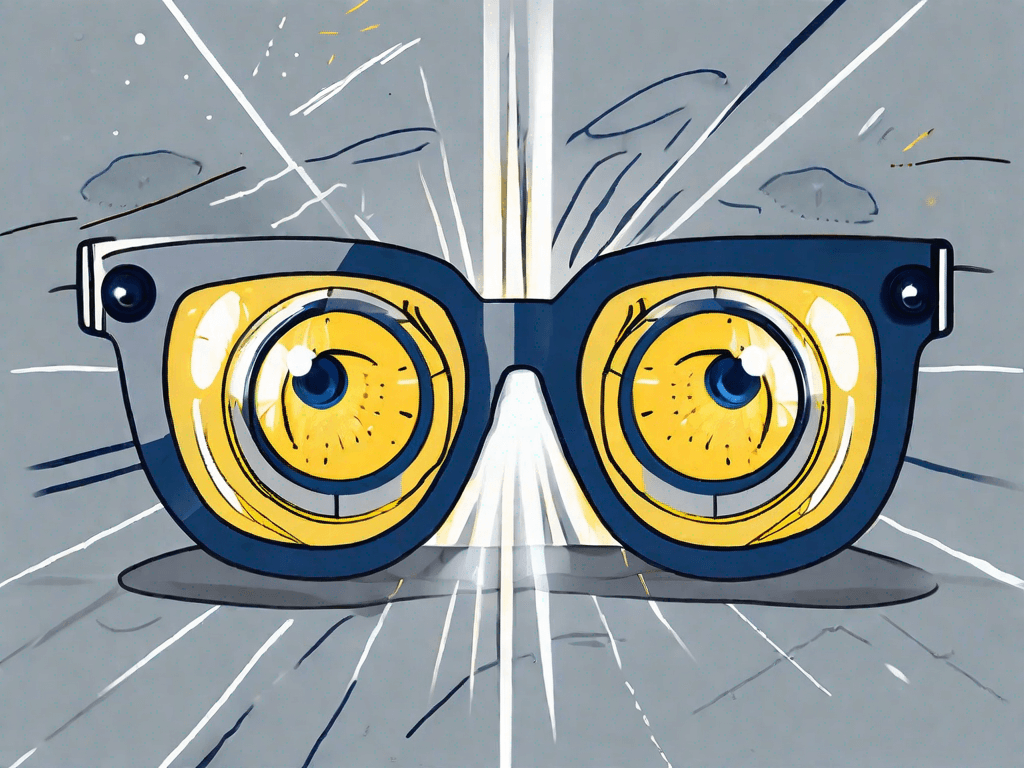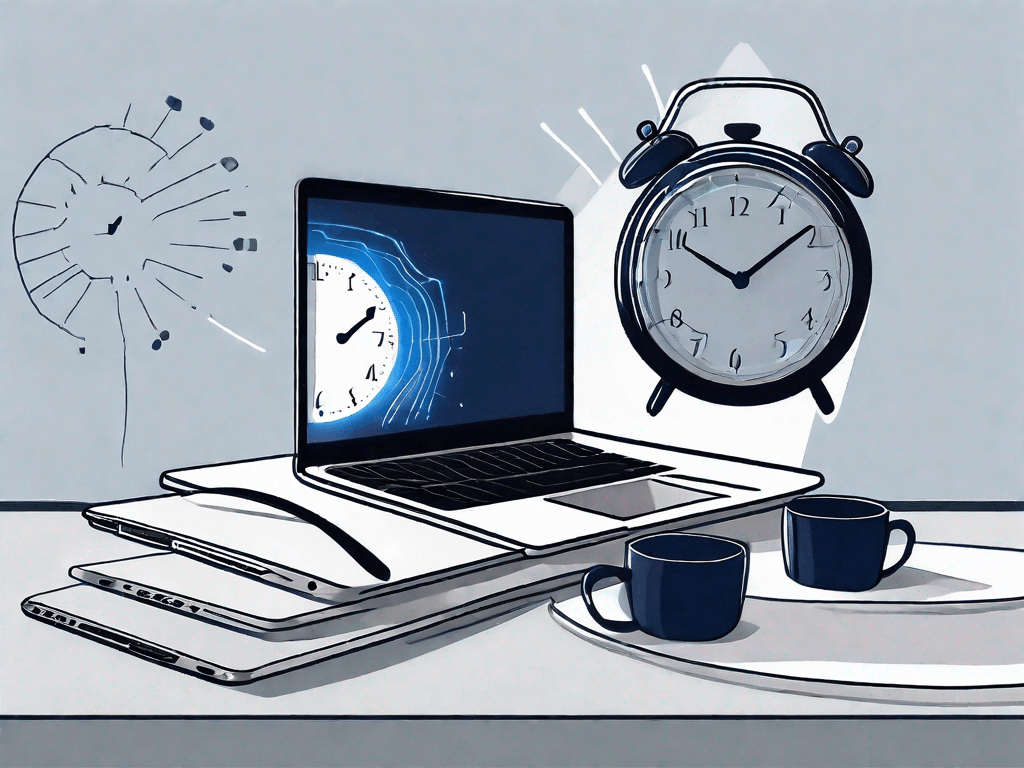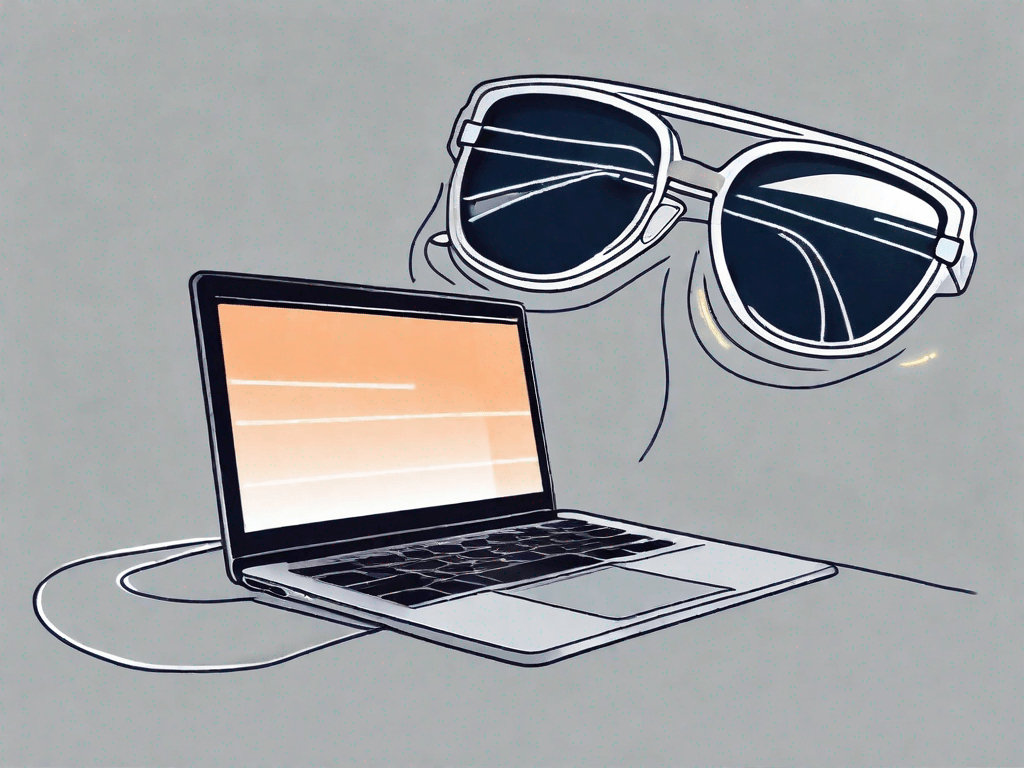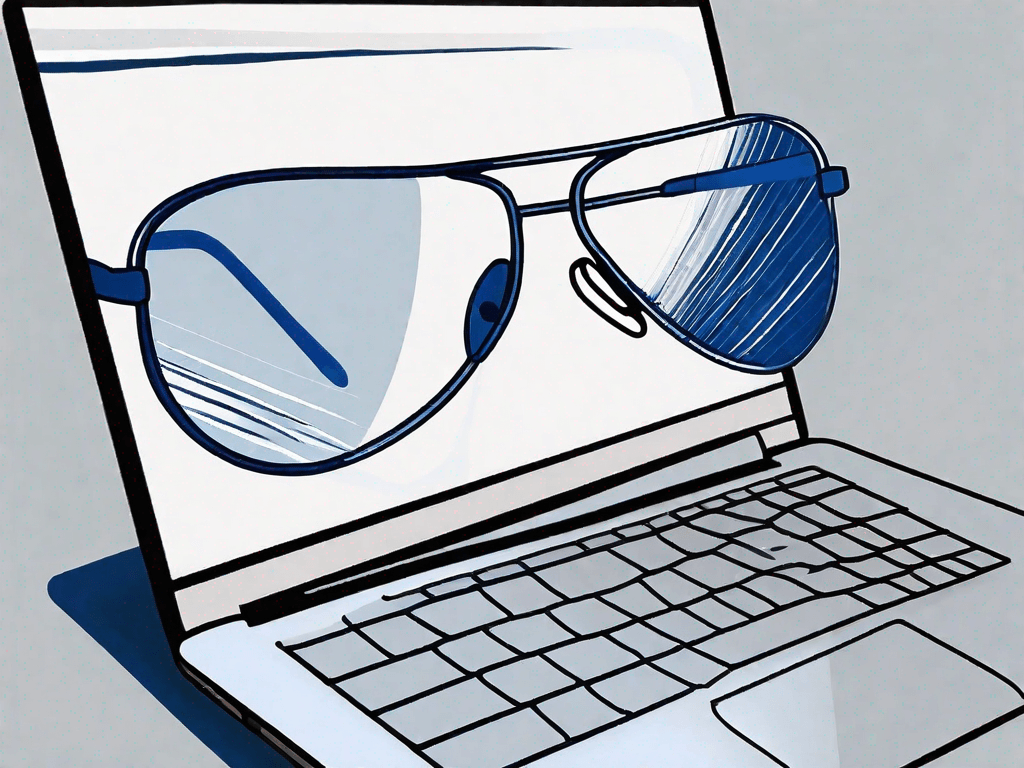Discover the Benefits of Blue Light Glasses with a Yellow Tint
In today's digital age, our exposure to blue light has significantly increased. Blue light is emitted by electronic devices such as smartphones, tablets, and computers. While these devices have become essential for work, communication, and entertainment, prolonged exposure to blue light can have negative effects on our eyes and overall health. This is where blue light glasses with a yellow tint come into play.
Understanding Blue Light and Its Effects
First, let's delve into what blue light is and how it affects our eyes. Blue light is a high-energy visible light that is emitted by the sun as well as many artificial light sources. While some blue light is essential for regulating our sleep-wake cycle and boosting alertness, excessive exposure can lead to eye strain, eye fatigue, headaches, and even sleep disturbances.
What is Blue Light?
Blue light is a portion of the visible light spectrum with a wavelength between approximately 380 to 500 nanometers. It has a shorter wavelength and higher energy compared to other colors in the spectrum, such as red and yellow.
Blue light is not inherently harmful, as it plays a crucial role in our daily lives. It helps regulate our circadian rhythm, the internal clock that governs our sleep-wake cycle. Exposure to blue light during the day can enhance our mood, increase alertness, and improve cognitive performance.
However, the problem arises when we are exposed to excessive amounts of blue light, especially during the evening and nighttime hours. The widespread use of electronic devices, such as smartphones, tablets, and computers, has significantly increased our exposure to artificial blue light sources.
Artificial blue light emitted by electronic devices can disrupt our natural sleep patterns. The blue light suppresses the production of melatonin, a hormone that regulates sleep. This can lead to difficulties falling asleep, staying asleep, and getting restful sleep. Prolonged exposure to blue light at night can also contribute to the development of sleep disorders, such as insomnia.
How Does Blue Light Affect Your Eyes?
When we are exposed to blue light for extended periods, it can penetrate deep into the eye and reach the retina. The retina is a thin layer of tissue located at the back of the eye that contains cells called photoreceptors. These photoreceptors are responsible for converting light into electrical signals that are sent to the brain, allowing us to see.
While the cornea and lens in our eyes are effective at blocking a significant amount of ultraviolet (UV) radiation from reaching the retina, they are less effective at blocking blue light. This means that a considerable amount of blue light can reach the retina, potentially causing damage to the cells in the retina.
Long-term exposure to blue light can lead to the development of eye conditions such as macular degeneration. Macular degeneration is a progressive eye disease that affects the macula, the central part of the retina responsible for sharp, central vision. It can result in blurred or distorted vision, difficulty recognizing faces, and even vision loss.
In addition to the potential damage to the retina, blue light exposure can also cause eye strain and eye fatigue. When we stare at screens for prolonged periods, our eyes have to work harder to maintain focus and adjust to the constant changes in brightness and contrast. This can lead to symptoms such as dry eyes, blurred vision, headaches, and eye discomfort.
To protect our eyes from the harmful effects of blue light, it is essential to take proactive measures. One way is to reduce our exposure to artificial blue light by limiting screen time, especially in the evening. Another option is to use blue light filters or glasses that block or absorb blue light. These filters and glasses can help reduce eye strain and minimize the disruption to our sleep patterns.
Overall, understanding blue light and its effects on our eyes is crucial in today's digital age. By being aware of the potential risks and taking steps to protect our eyes, we can maintain good eye health and minimize the negative impact of excessive blue light exposure.
The Science Behind Yellow Tinted Glasses
Yellow tinted glasses are designed to alleviate the harmful effects of blue light by filtering out a portion of it. The yellow tint works by selectively blocking blue light while allowing other colors to pass through. This results in reduced eye strain and a more comfortable visual experience when using digital devices.
The Role of Yellow Tint in Blocking Blue Light
Yellow tinted glasses have a special coating that filters out a significant portion of blue light. Blue light, which is emitted by electronic devices such as smartphones, tablets, and computer screens, has been linked to various health issues including eye strain, sleep disturbances, and even macular degeneration. By selectively blocking blue light, yellow tinted glasses reduce the amount of high-energy blue light that reaches the eye, thus decreasing the risk of eye strain and fatigue caused by digital screens.
But how does the yellow tint actually block blue light? The answer lies in the properties of light and the science of color. Light is made up of different wavelengths, each corresponding to a different color. Blue light has a shorter wavelength and higher energy compared to other colors in the visible spectrum. The yellow tint in the glasses is specifically designed to absorb and filter out the shorter blue wavelengths, while allowing longer wavelengths of light, such as green and red, to pass through. This selective filtering helps to create a more balanced and comfortable visual experience.
The Impact of Yellow Tint on Visual Comfort
In addition to blocking blue light, the yellow tint in glasses also has a positive impact on visual comfort. The tint enhances contrast, making it easier to distinguish between different objects and details. This can be particularly beneficial when working in brightly lit environments or during nighttime computer use, where excessive glare can cause eye strain.
Moreover, the yellow tint reduces glare, which is caused by the reflection of light off smooth surfaces such as computer screens or car windshields. Glare can be distracting and uncomfortable, leading to eye fatigue and difficulty focusing. By reducing glare, yellow tinted glasses provide a more relaxed and enjoyable viewing experience.
It's important to note that yellow tinted glasses are not just for those who experience eye strain or have sensitivity to blue light. They can be beneficial for anyone who spends a significant amount of time in front of digital screens, as they help to protect the eyes and promote visual comfort.
In conclusion, yellow tinted glasses offer a scientifically backed solution to alleviate the harmful effects of blue light. By selectively blocking blue light and enhancing contrast while reducing glare, these glasses provide a more comfortable visual experience and help to protect the eyes from the potential long-term effects of excessive blue light exposure.
Health Benefits of Using Blue Light Glasses with a Yellow Tint
Now that we understand the mechanics behind blue light and yellow-tinted glasses, let's explore the various health benefits of using these glasses.
Blue light glasses with a yellow tint offer more than just a stylish accessory. They provide a range of advantages that can positively impact our overall well-being. Let's delve into some of the key health benefits:
Protection Against Digital Eye Strain
Extended exposure to digital screens often leads to eye strain, also known as computer vision syndrome. Symptoms of eye strain include dry eyes, blurred vision, and headaches. The constant bombardment of blue light from electronic devices can exacerbate these symptoms, leaving us feeling fatigued and uncomfortable.
Fortunately, blue light glasses with a yellow tint can help alleviate these symptoms. By reducing the amount of blue light that enters the eyes, these glasses provide a shield against the harmful effects of digital screens. The yellow tint acts as a filter, selectively blocking out the blue light wavelengths that are known to cause eye strain. This reduction in blue light exposure can significantly reduce discomfort and improve visual comfort during prolonged screen use.
Improving Sleep Quality
We live in a world that is constantly connected, with electronic devices playing a significant role in our daily lives. However, the blue light emitted by these devices can disrupt our natural sleep patterns.
Research has shown that exposure to blue light in the evening can suppress the production of melatonin, a hormone that regulates sleep-wake cycles. This suppression can make it difficult to fall asleep and result in poor sleep quality.
By wearing blue light glasses with a yellow tint, we can mitigate this issue. The glasses filter out a significant amount of blue light, allowing our bodies to produce melatonin naturally. This promotes better sleep quality, ensuring that we wake up feeling refreshed and rejuvenated.
Reducing the Risk of Macular Degeneration
Our eyes are precious, and it is essential to protect them from potential harm. Prolonged exposure to blue light has been linked to an increased risk of macular degeneration, which is a leading cause of vision loss in older adults.
Macular degeneration affects the macula, a small part of the retina responsible for central vision. Over time, the blue light can cause damage to the cells in the macula, leading to a gradual loss of vision.
By wearing blue light glasses with a yellow tint, we can reduce our exposure to harmful blue light and potentially decrease the risk of developing this vision-threatening condition. The yellow tint acts as a barrier, absorbing a significant portion of the blue light before it reaches the delicate structures of the retina. This added protection can help safeguard our eyes and preserve our vision for years to come.
As we can see, blue light glasses with a yellow tint offer a range of health benefits. From protecting against digital eye strain to improving sleep quality and reducing the risk of macular degeneration, these glasses are a valuable tool in our modern, technology-driven world. By incorporating them into our daily routine, we can prioritize our eye health and overall well-being.
Choosing the Right Blue Light Glasses
When it comes to selecting blue light glasses with a yellow tint, there are a few factors worth considering.
Blue light glasses have gained popularity in recent years due to the increased use of digital devices and exposure to artificial light. These glasses are designed to filter out the harmful blue light emitted by electronic screens, which can cause eye strain, fatigue, and disrupt sleep patterns.
Factors to Consider When Buying Blue Light Glasses:
First and foremost, it's important to ensure that the glasses provide adequate blue light protection. Look for glasses that block at least 95% of blue light in the 400 to 450 nanometer range. This range is where the most harmful blue light is emitted, so it's crucial to choose glasses that effectively filter out this wavelength.
Additionally, consider the frame design and fit for optimal comfort during extended wear. Blue light glasses come in various styles and sizes, so it's essential to find a pair that suits your face shape and personal style. Comfort is key, especially if you plan on wearing the glasses for long periods.
Understanding the Different Levels of Yellow Tint
Yellow tinted glasses come in various shades, ranging from a very light yellow to a deeper amber color. The lighter tints are more suitable for everyday use, as they provide a subtle yellow hue that helps reduce eye strain without significantly altering color perception.
On the other hand, the darker tints are ideal for individuals with higher sensitivity to blue light or those working in exceptionally bright environments. These deeper amber-colored glasses offer a more pronounced yellow tint, which effectively blocks a greater amount of blue light. They are particularly beneficial for people who spend a significant amount of time in front of screens or under intense artificial lighting.
When choosing the level of yellow tint, it's essential to consider your specific needs and preferences. Some people may find the lighter tints sufficient for their daily activities, while others may require the extra protection provided by the darker tints.
In conclusion, selecting the right blue light glasses with a yellow tint involves considering factors such as the level of blue light protection, frame design, and the desired level of yellow tint. By taking these factors into account, you can find a pair of glasses that not only protect your eyes but also suit your personal style and needs.
Frequently Asked Questions About Blue Light Glasses with a Yellow Tint
Blue light glasses with a yellow tint have gained popularity in recent years as more people spend extended periods of time in front of digital screens. These glasses are designed to filter out the harmful blue light emitted by electronic devices, such as smartphones, tablets, and computers. In this article, we will address some frequently asked questions about blue light glasses with a yellow tint and provide you with valuable information to make an informed decision.
Can I Wear Blue Light Glasses All Day?
Many people wonder if it is safe to wear blue light glasses with a yellow tint throughout the day. The answer is generally yes. These glasses are specifically designed to reduce the negative effects of blue light exposure, such as eye strain, fatigue, and potential sleep disturbances. However, it is important to remember that blue light glasses should not be seen as a substitute for regular breaks from screen time and good lighting practices. Taking short breaks and ensuring proper lighting in your workspace are still essential for maintaining overall eye health.
Are There Any Side Effects of Wearing Blue Light Glasses?
Wearing blue light glasses with a yellow tint is considered safe for most individuals. However, it is worth noting that some people may experience mild color distortion due to the yellow tint. This is a temporary effect that usually disappears after a short adjustment period. If you notice any persistent discomfort or vision changes while wearing blue light glasses, it is recommended to consult an eye care professional for further evaluation. They can assess your specific needs and provide guidance on the best course of action.
It's important to choose blue light glasses with a yellow tint from reputable manufacturers. This ensures that the glasses provide the intended level of blue light protection and meet quality standards. Reading customer reviews and seeking recommendations from eye care professionals can help you make an informed decision.
In conclusion, blue light glasses with a yellow tint offer several benefits for those who spend a significant amount of time in front of digital screens. These glasses help protect our eyes from the harmful effects of blue light, reduce eye strain and fatigue, improve sleep quality, and potentially decrease the risk of vision problems in the long run. When choosing blue light glasses, consider the level of blue light protection and the shade of yellow tint that suits your needs. Remember to take regular breaks from screen time and practice good lighting habits to maintain optimal eye health.





